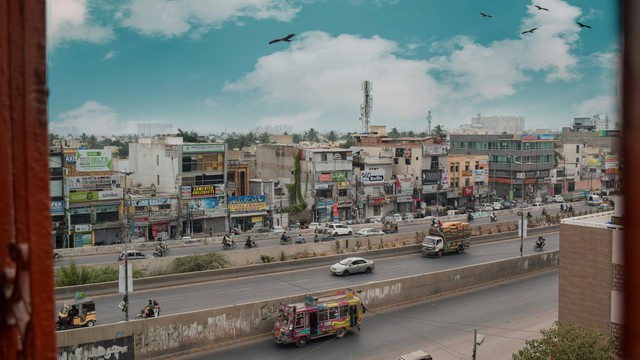A tale of two cities: Density regulations vs reality
Poor residents in South Asian cities live together in high numbers that easily surpass the limits set in planning regulations. What can be done to create more housing for the poor?


Paposh Nagar, Karachi, Pakistan. 'Living room' on the street - Copyright Fareena Chanda, 2010
Urban planners in South Asia are always advised by Northern experts to make their settlements more densely populated if urban sustainability is to be achieved. But their task is formidable given that the world’s three most densely populated megacities, Dhaka, Mumbai and Karachi, are all in South Asia. The poor live together in high numbers surpassing all building byelaws and zoning regulations for these cities. The rules are often flouted, particularly in both informal and formal settlements where residents earn low incomes.
Results from IIED-supported density-related studies on Karachi, Bangkok, the yet-to-be published study on Kathmandu and research material on Mumbai by Alain Bertaud) tell us a lot about the challenges the cities’ inhabitants face. Karachi, Pakistan’s largest city, has 2,280 people living on each hectare of the city. But this average figure masks the disparities in living conditions experienced by the city’s wealthiest and poorest inhabitants. Parts of Karachi’s inner city have more than 4,000 persons living on each hectare of land. This is in violation of byelaws which permit a maximum of 1,625 persons per hectare. Meanwhile, Karachi’s elite settlements have densities as low as 200 persons per hectare. Individual residential plots of more than 0.2 hectares can be found in elite settlements. To put this in perspective, one family is living on enough land to house 800 people if it was occupied as densely as it is in the city’s poorer areas.
Nepal’s capital city, Kathmandu, is also growing. The city has an average density of 1,322 persons per hectare [PDF], but its inner city has 2,221 people per hectare. If Kathmandu’s byelaws were enforced, a sizeable portion of the inner city population would have to be removed, according to IIED-supported research, which will soon be published.
Another measure that urban planners look at when analysing urban density is called the floor to ratio (FAR), the ratio of the footprint of an entire plot of land against the actual constructed area (which may be a building with many floors). According to Mumbai’s byelaws, the maximum residential FAR is 1:1.33. Mumbai has 3,230 people living per hectare. These density levels could never have been achieved if this floor-to-area ratio had been seriously enforced. Like other cities in Southern Asia, Mumbai’s informal settlements outstrip the permitted urban planning densities. Dharavi, a large slum, for instance, has densities as high as 44,460 people per hectare in its Chamra Bazar neighbourhood, according to a study by the Kamla Rajeja Vidyanidhi Institute of Architecture.
Bangkok, Thailand is different because the permissible floor to area ratio in residential areas is between a range of 1:06 to 1:12 [PDF]. This means that the rules allow for the buildings to take up more of the land, allowing for higher population densities. Formal sector low income housing has over 3,550 people living per hectare and even its informal settlements have densities that are in keeping with Bangkok’s building byelaws, because the regulations are less stringent than those set in the Asian cities mentioned above. Yet Bangkok, as a whole, has a much lower density at 610 persons per hectare than Mumbai, Karachi or Kathmandu. This means that the higher income areas in Bangkok have very low densities. Figures from Karachi and Mumbai indicate the same.
Slums and informal settlements, where the poor live, accommodate more than 50 percent of the population of these cities. As the poor are drawn to the cities, their numbers are set to dramatically increase over time. Clearly, there is an urgent need to provide these families with more low-income housing. But houses need to be built on land, and land is in short supply because of speculation. Land lies vacant for years while owners wait for it to increase in value. Or the land is used for high-end commercial and residential housing. Given all the challenges and constraints, what can be done?
- Increase the number of people living in high-income urban areas by increasing urban density standards in wealthier neighbourhoods.
- Heavily fine landowners who leave their land vacant and undeveloped.
- Refuse formal sector loans to people who already own a house, to avoid concentrations of land ownership.
- Charge heavy taxes on the sale of large individual plots in order to discourage it.
These recommendations go against the market mantra, and so haven’t been applied to urban planning policies and regulations in South Asia. Unless they’re adopted, the possibility of providing land and credit to the poor will remain a distant dream.
For more information, visit alternative routes to density, which has been updated with new case studies, videos and publications exploring how tightly contained, heavily populated, shared spaces can be made to work best, for residents and for the natural systems that cities depend on.




